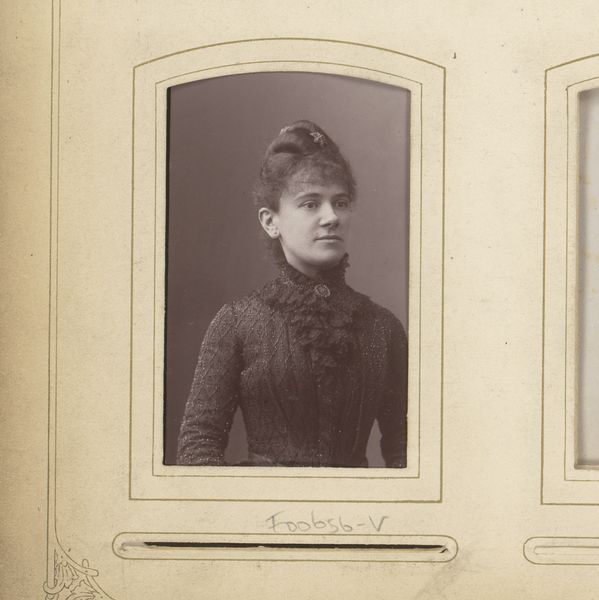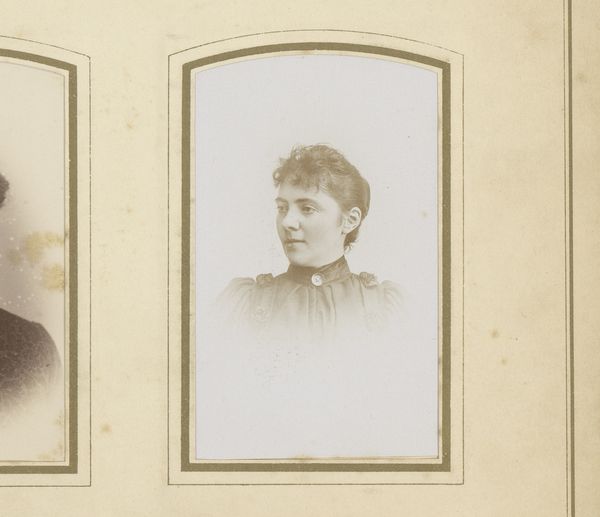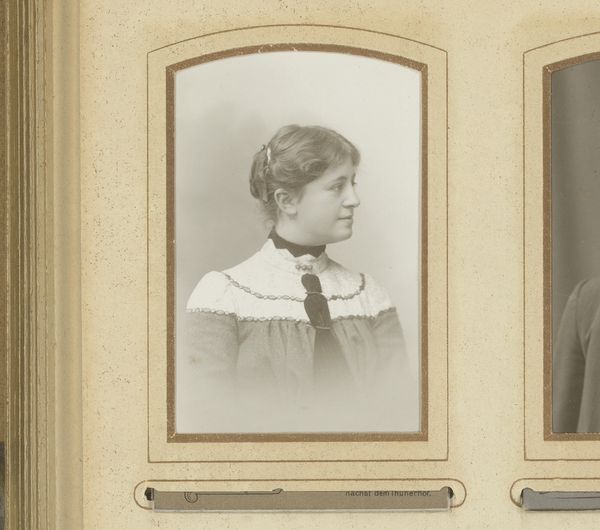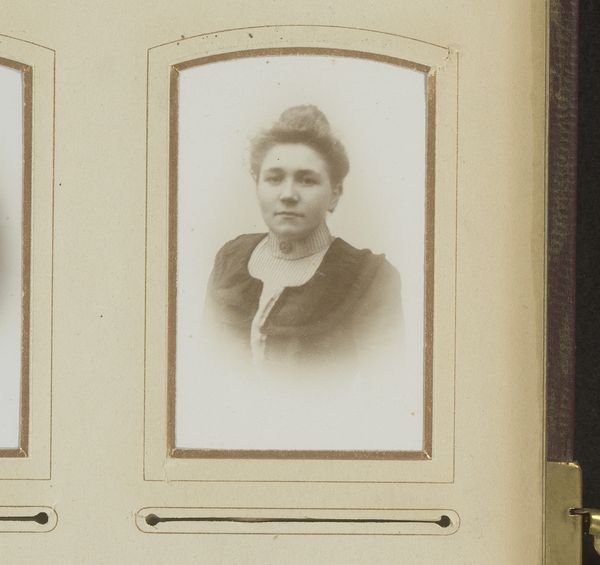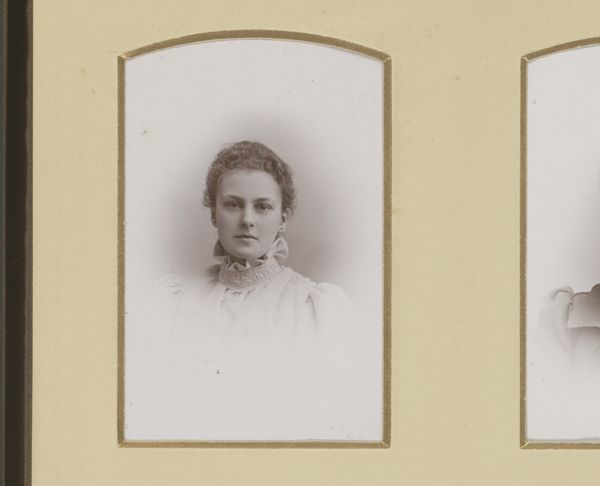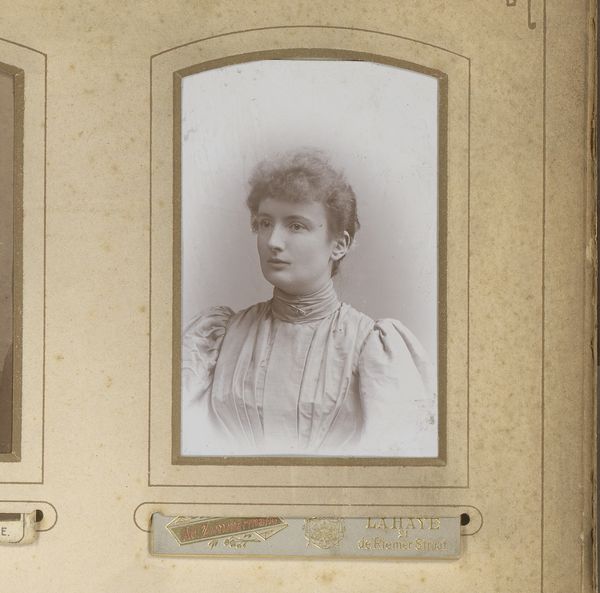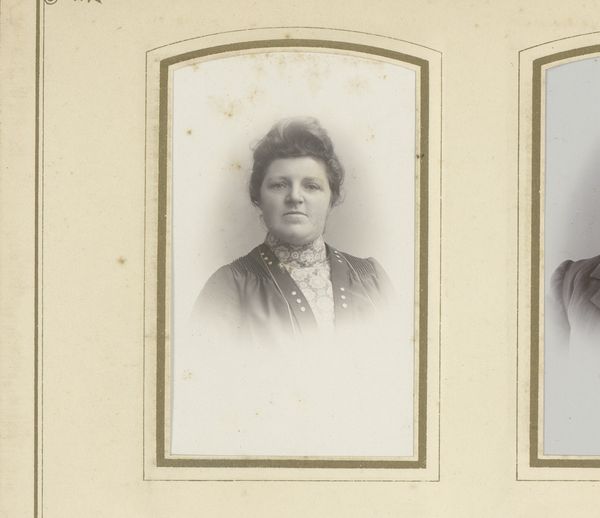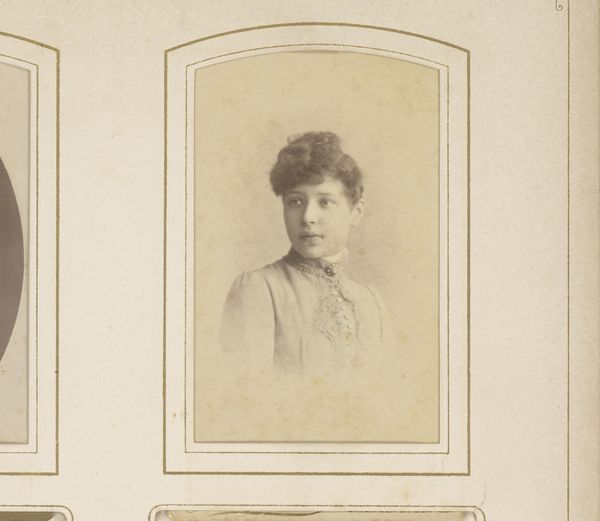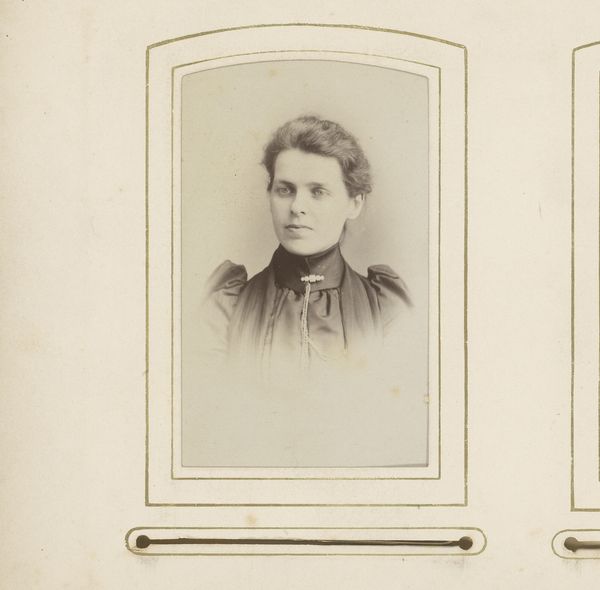
photography
#
portrait
#
16_19th-century
#
pictorialism
#
photography
#
historical photography
#
historical fashion
#
19th century
Dimensions: height 82 mm, width 50 mm
Copyright: Rijks Museum: Open Domain
Curator: Here we have "Portret van een vrouw, aangeduid als Maria," or "Portrait of a Woman, Referred to as Maria," a photographic portrait dating from sometime between 1890 and 1920. Editor: What strikes me is the gravity in her expression. There's a contained strength, wouldn’t you agree? And that high collar, the meticulous hair... it speaks to a certain era, a specific code of femininity. Curator: Precisely. This photograph is an example of pictorialism, a movement in photography that aimed to elevate photography to the status of art by using soft focus, manipulated printing processes, and subject matter inspired by painting. These stylistic choices often placed women as objects of idealized beauty, obscuring the lived realities of female existence. Editor: But "Maria," as she’s referred to here, her gaze seems to resist that objectification, doesn’t it? There’s a directness that cuts through the aesthetic haze of the time. Perhaps it’s my own contemporary bias reading into her features. Do you think her dark dress signifies something beyond simple fashion? Curator: It’s plausible, yes. During this period, black clothing could indicate mourning or simply fashionable austerity. Analyzing this portrait necessitates an exploration into gender roles and representation in the late 19th and early 20th centuries. What were the limitations imposed upon women of that era, and how might someone like Maria have navigated them? Editor: You’re pulling out threads of historical understanding I never considered at first glance. Still, the symbol of the flower or a rosette pinned to her clothing strikes me... flowers have historically represented virtue and innocence. Does that clash or deepen your view of this photograph's original social and cultural setting? Curator: It definitely complicates it, doesn't it? Such iconography highlights the conflicting messages women received – a simultaneous call to be both demure and virtuous, yet presentable and engaged with society. Editor: The nuances, always the nuances! Well, I came here expecting a pretty picture and leaving contemplating women's societal pressures. Curator: That's what art's supposed to do, isn't it? Invite us to see the world, and ourselves, differently.
Comments
No comments
Be the first to comment and join the conversation on the ultimate creative platform.
